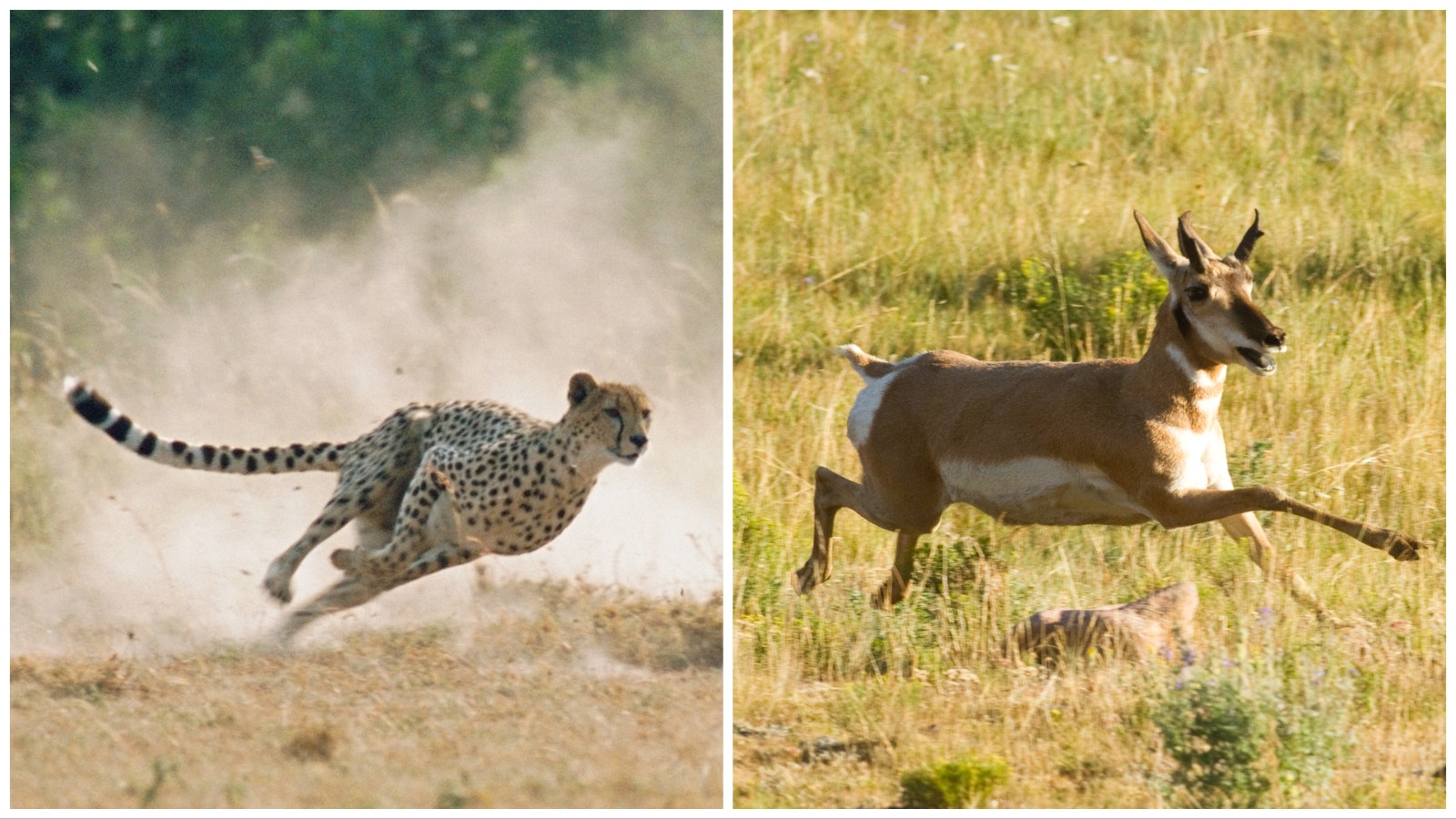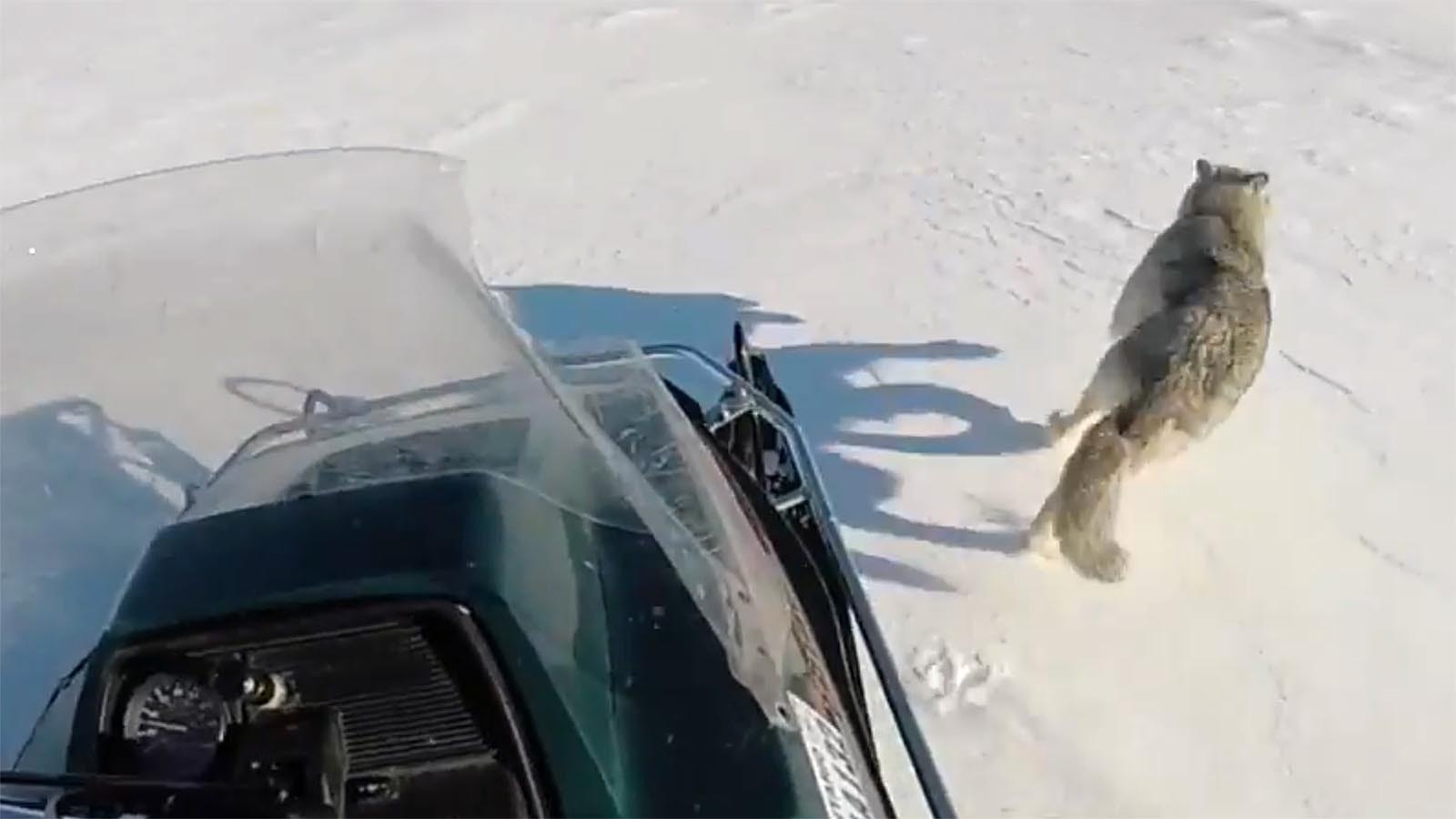For decades, the race between Wyoming pronghorn and Africa cheetahs has been regarded as a settled matter. At least in terms of sheer speed, Cheetahs win.
Or so the story goes.
Cheetahs are purported to reach speeds of nearly 70 mph, at least in short bursts. Whereas pronghorn – commonly called antelope – were said to top out at somewhere around 55 mph.
The “speed goats” (as Wyomingites sometimes affectionately call pronghorn), could only claim the endurance title, as they can hold their top speed over several miles, while cheetahs burn out quickly.
Not so fast, say a Uinta County rancher and English researcher. That might not be true after all. Antelope might actually be faster.
Wyoming Speed Goats Could Be World Famous
By using GPS tracking collars and other technology, rancher Lance Neeff and researcher Alan Wilson hope to settle the matter once and for all.
If they can make all the necessary arrangements and get clearance for the project, Wilson would like to apply the same methods he used to study the speed of cheetahs on antelope here.
There’s reason to think antelope could come out on top. Wilson’s data shows cheetahs actually topping out in the high 50s mph.
At least anecdotally, antelope are faster than that, Neeff told Cowboy State Daily.
“I’ve paralleled them going down the road at 60 mph, and I’ve heard other people say they’ve seen them going 65,” he said.
And hard data proving antelope really can outpace cheetahs could have huge implications for Wyoming’s reputation, and possibly its tourism industry, Neeff said.
“If it happens, everybody in the world is going to know about Wyoming antelope – the whole damn world,” he said.
Cheetahs, Pronghorn Met Before – It Didn’t End Well
The lightning cats and speed goats aren’t strangers.
There’s reason to conclude antelope got so fast to begin with because they used to have to run from cheetahs, Neeff said.
That’s right: North America used to have cheetahs.
They’re thought to have gone extinct roughly 10,000 years ago. A great example of North American cheetah fossils was discovered in Grand Canyon Park, Arizona, according the National Park Service.
Pronghorn were here then too.
And regarding another point of science, pronghorn are neither antelope or goats, though commonly or colloquially called both. Nor are they related to deer, elk or other Wyoming big game species. They’re unique to Western North America and have no living relatives anywhere in the world.
But they have reason to begrudge cheetahs.
Cheetahs feasted on antelope before Wyoming was called Wyoming. And since the state was given its name, cheetahs have gotten all credit for being faster.
So there could be some sweet payback coming – if the pronghorn can, in fact, take the “world’s fastest land animal” title away from their ancient predators.
How It Could Be Done
The cheetah’s legendary 70 mph speed might have been the result of incomplete research, Wilson – who lives about 20 miles north of London – told Cowboy State Daily over Zoom on Tuesday.
That figure comes from research done decades ago when methods for measuring speed were far more crude, he said.
“It was basically done with pieces of meat hanging out the back of a Land Rover and a stopwatch,” he said.
Wilson works for the Structures and Motion Laboratory at the Royal Veterinary College. He has extensive experience conducting speed and motion research on wild animals, horses and even some human athletes.
To study the speed and agility of cheetahs, he put GPS collars on the cats, and also employed gyroscopes and other high-tech equipment.
That allowed him to gather real-time data from more than 500 “hunting run,” or instances of the big cats trying to chase down their dinner.
Determining an average flat-out speed required lots of data, because in the age-old dance of predator and prey, raw speed isn’t always the key factor, Wilson said.
“Hunting is about maneuvering; you shouldn’t go any faster than you need to,” he said.
The same holds true for prey animals, he added.
“The key is to turn as suddenly as you can, turn as sharply as you can and slow down a bit,” he said. “That’s your best bet.”
With hundreds of examples to draw from in the cheetah study, there was “more of a chance of getting a true maximum speed,” Wilson said, which was in the upper 50s miles per hour.
Eager To Come To Wyoming
Wilson is headed to Botswana, Africa, soon to do more research on wild animals there. But he’d love to make a trip to Wyoming – possibly as soon as this year – and apply his research methods to antelope.
He’s never been any closer to Wyoming than Wisconsin and hasn’t seen pronghorn in person, so he’s eager to learn more about the fascinating speedsters of the high plains.
He added that it was Neeff who got him interested in a pronghorn speed study.
After reading about his research on cheetahs, “Lance emailed me, and then emailed me again, and we started corresponding about antelope,” Wilson said.
But there’s the matter of arranging everything, Wilson added.
“The difficult bit is the logistics. The expensive bit is the logistics,” he said.
And the project needs government clearance since it would involve the capture and study of wildlife, Neeff said.
He’s been busy trying to drum up support for the project, reaching out to the office of Gov. Mark Gordon, the Wyoming Game and Fish Department and other agencies.
Messages to Gordon’s office and Game and Fish regarding the feasibility of a Wyoming antelope speed study hadn’t been answered by Tuesday afternoon.
Neeff is hopeful the idea will gain traction, and Wilson will be able to travel here and start applying some hard science to the hard question of whether pronghorn have been cheated by cheetahs.
“The potential for it is huge. If you think about it, 95% of the people in the United States have never seen a pronghorn antelope,” he said. “Nobody wants to come to Wyoming and see the second-fastest land animal in the world.”





